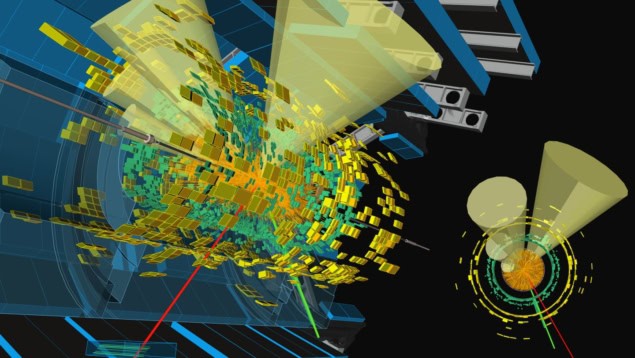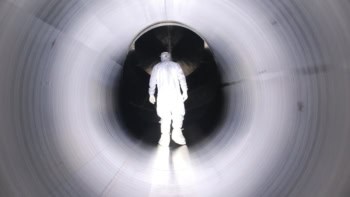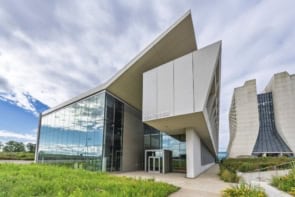
Physicists working on the ATLAS experiment on the Large Hadron Collider (LHC) are the first to report the production of top quark–antiquark pairs in collisions involving heavy nuclei. By colliding lead ions, CERN’s LHC creates a fleeting state of matter called the quark–gluon plasma. This is an extremely hot and dense soup of subatomic particles that includes deconfined quarks and gluons. This plasma is believed to have filled the early universe microseconds after the Big Bang.
“Heavy-ion collisions at the LHC recreate the quark–gluon plasma in a laboratory setting,” Anthony Badea, a postdoctoral researcher at the University of Chicago and one of the lead authors of a paper describing the research. As well as boosting our understanding of the early universe, studying the quark–gluon plasma at the LHC could also provide insights into quantum chromodynamics (QCD), which is the theory of how quarks and gluons interact.
Although the quark–gluon plasma at the LHC vanishes after about 10-23 s, scientists can study it by analysing how other particles produced in collisions move through it. The top quark is the heaviest known elementary particle and its short lifetime and distinct decay pattern offer a unique way to explore the quark–gluon plasma. This because the top quark decays before the quark–gluon plasma dissipates.
“The top quark decays into lighter particles that subsequently further decay,” explains Stefano Forte at the University of Milan, who was not involved in the research. “The time lag between these subsequent decays is modified if they happen within the quark–gluon plasma, and thus studying them has been suggested as a way to probe [quark–gluon plasma’s] structure. In order for this to be possible, the very first step is to know how many top quarks are produced in the first place, and determining this experimentally is what is done in this [ATLAS] study.”
First observations
The ATLAS team analysed data from lead–lead collisions and searched for events in which a top quark and its antimatter counterpart were produced. These particles can then decay in several different ways and the researchers focused on a less frequent but more easily identifiable mode known as the di-lepton channel. In this scenario, each top quark decays into a bottom quark and a W boson, which is a weak force-carrying particle that then transforms into a detectable lepton and an invisible neutrino.
The results not only confirmed that top quarks are created in this complex environment but also showed that their production rate matches predictions based on our current understanding of the strong nuclear force.
“This is a very important study,” says Juan Rojo, a theoretical physicist at the Free University of Amsterdam who did not take part in the research. “We have studied the production of top quarks, the heaviest known elementary particle, in the relatively simple proton–proton collisions for decades. This work represents the first time that we observe the production of these very heavy particles in a much more complex environment, with two lead nuclei colliding among them.”
As well as confirming QCD’s prediction of heavy-quark production in heavy-nuclei collisions, Rojo explains that “we have a novel probe to resolve the structure of the quark–gluon plasma”. He also says that future studies will enable us “to understand novel phenomena in the strong interactions such as how much gluons in a heavy nucleus differ from gluons within the proton”.
Crucial first step
“This is a first step – a crucial one – but further studies will require larger samples of top quark events to explore more subtle effects,” adds Rojo.

Simultaneous production of a top quark and a photon observed for the first time
The number of top quarks created in the ATLAS lead–lead collisions agrees with theoretical expectations. In the future, more detailed measurements could help refine our understanding of how quarks and gluons behave inside nuclei. Eventually, physicists hope to use top quarks not just to confirm existing models, but to reveal entirely new features of the quark–gluon plasma.
Rojo says we could, “learn about the time structure of the quark–gluon plasma, measurements which are ‘finer’ would be better, but for this we need to wait until more data is collected, in particular during the upcoming high-luminosity run of the LHC”.
Badea agrees that ATLAS’s observation opens the door to deeper explorations. “As we collect more nuclei collision data and improve our understanding of top-quark processes in proton collisions, the future will open up exciting prospects”.
The research is described in Physical Review Letters.



